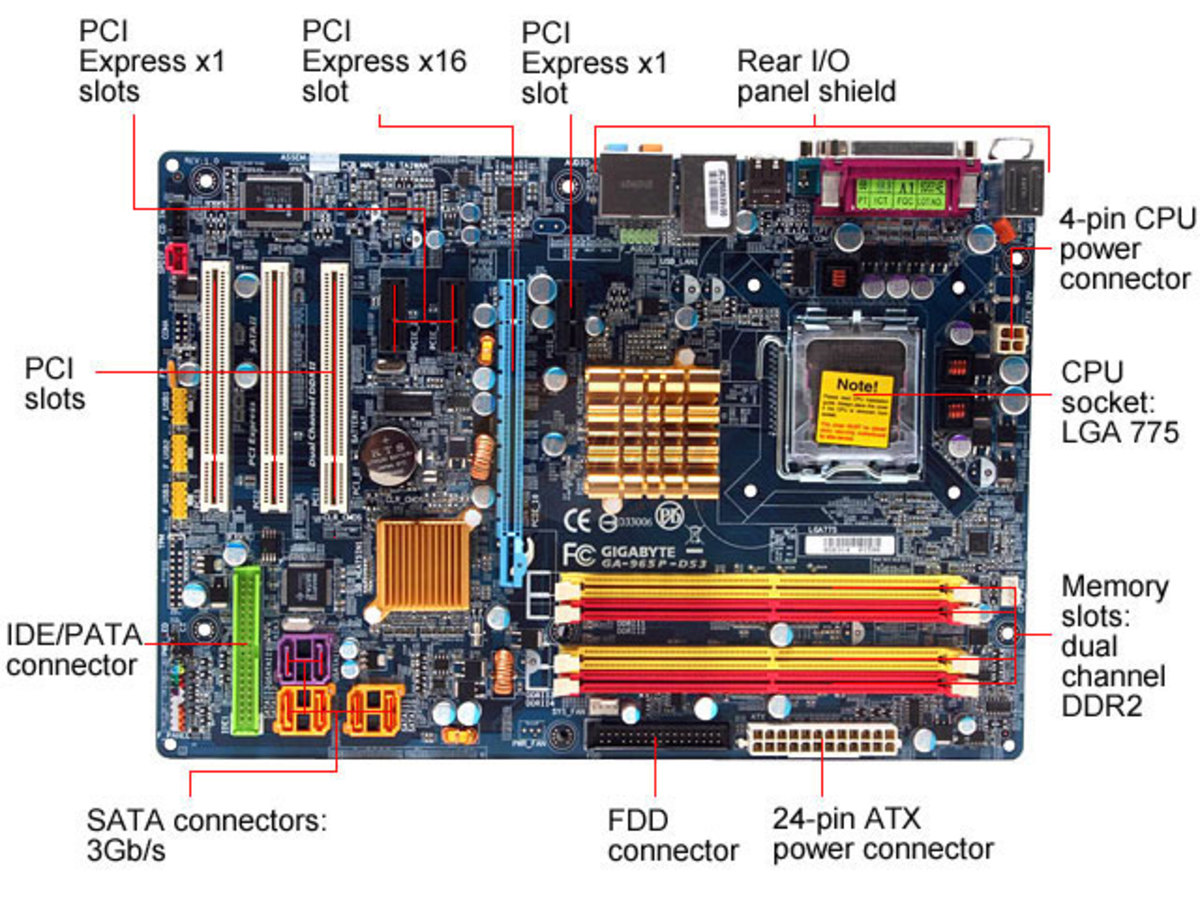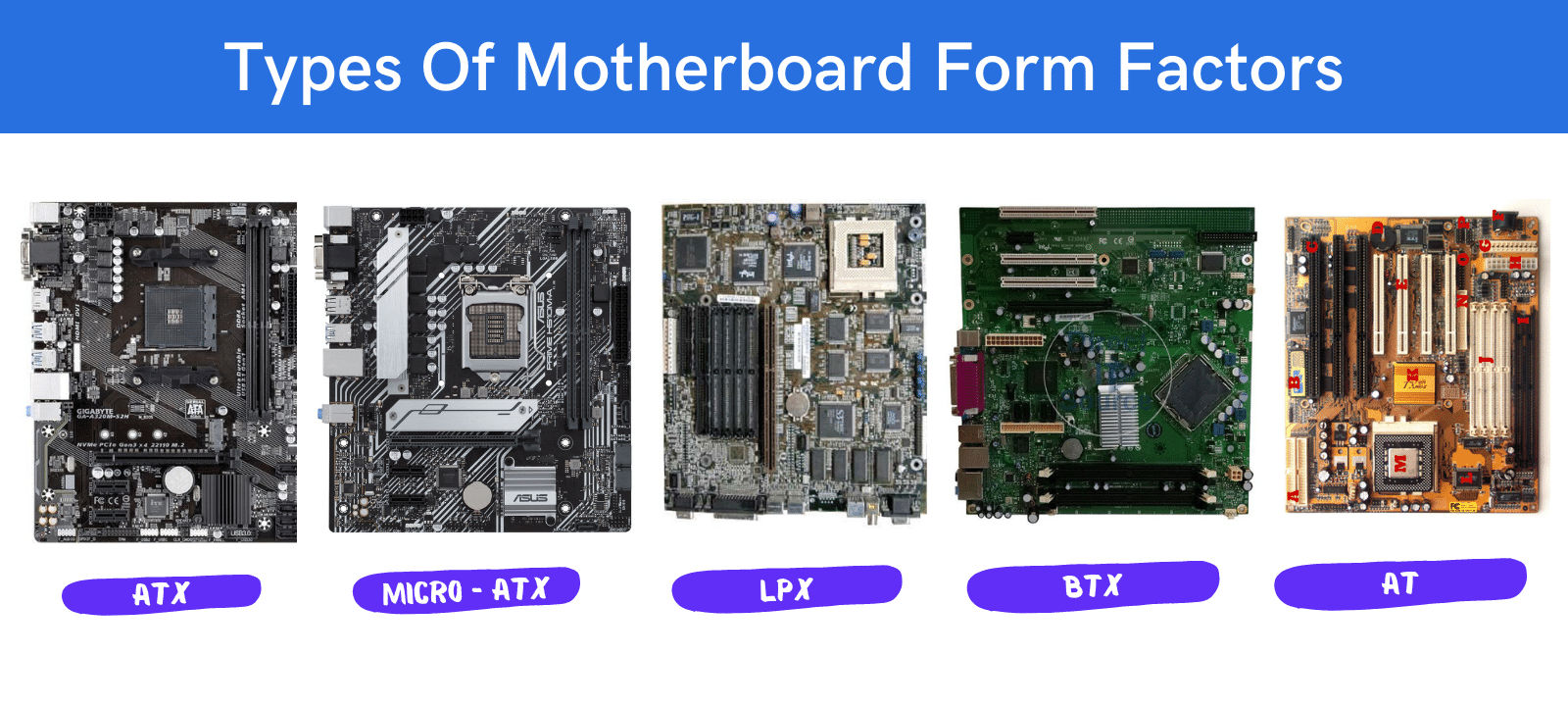Mother Board Form Factor
Mother Board Form Factor - The most common form factor for desktop computers is atx, which was developed by intel in 1995. Each has its own advantages and. The vast majority of computers made since 1995 use either the atx form factor, also called full atx, or the microatx form factor, also called atx. If you are looking for additional information about the type or form factor of the motherboard, see the form factor definition. To help you compare the difference in motherboard sizes, we have laid out all three standard motherboard form factors side by side in the image below: Web this model follows the baby at (form factor), used in many desktop pcs. Standardization means you can easily find a processor, ram, power supply, and storage that works with. Then, compare these dimensions to the standard sizes for each form factor. Web motherboard form factors diagram (image credit: The three motherboard form factors are all different sizes.
That page contains sections about each of the motherboard form factors and information on how to distinguish each of them. Motherboard form factor comparison chart The vast majority of computers made since 1995 use either the atx form factor, also called full atx, or the microatx form factor, also called atx. The form factors influence the performance of the motherboard as well because it specifies physical specifications. While this allows for smaller cases it also limits the number of expansion slots available. Web there are different motherboards with their degree of expandability. Therefore, they require more space for installation and display limited installation abilities inside mobile phones and mini desktop versions. The motherboard features all the core components including dimm slots for ram, usually 1 x pcie lane, and. Web let’s start by taking a look at everyone’s favorite, the atx form factor. Nearly every motherboard for home computers at your local pc shop or online will be in one of these flavors.
That page contains sections about each of the motherboard form factors and information on how to distinguish each of them. History mainboard of a nextcube computer (1990) with microprocessor motorola 68040 operated at 25 mhz and a digital signal processor motorola 56001 at 25 mhz, which was directly accessible via a connector on the back of the casing. Standardization means you can easily find a processor, ram, power supply, and storage that works with. At motherboard form factor this is the first type of motherboard included in the list. Most common motherboard form factor: The form factor affects where individual components go and the shape of the computer's case. It then ultimately determines the size of the casing and the types of components that follow when building a pc and. Standard atx is the most common form factor, particularly on a desktop computer. Web the form factor of a motherboard defines its physical size, mounting hole locations, and other factors that determine whether the motherboard fits a particular case. If you are looking for additional information about the type or form factor of the motherboard, see the form factor definition.
1.2 motherboard form factor
So when the motherboards come in different sizes and shape its regulation is known as the form factor. Standardization means you can easily find a processor, ram, power supply, and storage that works with. Web as a result, almost all consumer motherboards sold today belong to one of these form factors: Motherboard form factor comparison chart The most common form.
Mini Itx Motherboard Form Factor Universal Network
Each has its own advantages and. Web the motherboard form factor is the size and shape of the motherboard. Larger motherboards are generally more powerful and offer more features, but they also take up more space inside your case. Nearly every motherboard for home computers at your local pc shop or online will be in one of these flavors. Web.
1.2 motherboard form factor
Nearly every motherboard for home computers at your local pc shop or online will be in one of these flavors. Web this model follows the baby at (form factor), used in many desktop pcs. Atx (advanced technology extended) the atx form factor was developed in 1995 as an upgrade of the at. The form factor affects where individual components go.
8 Types of Motherboard Form Factors Explained 2022 Guide
Standardization means you can easily find a processor, ram, power supply, and storage that works with. While this allows for smaller cases it also limits the number of expansion slots available. Web information to help in the design and development of related motherboard form factor compliant computer systems. Web there are different motherboards with their degree of expandability. Nearly every.
Motherboard Form Factors YouTube
Smaller motherboards can be a good choice if you’re looking to save space. Web information to help in the design and development of related motherboard form factor compliant computer systems. Therefore, they require more space for installation and display limited installation abilities inside mobile phones and mini desktop versions. To check the form factor of your motherboard, measure the width.
Motherboard Form Factors TurboFuture
The most common form factor for desktop computers is atx, which was developed by intel in 1995. That page contains sections about each of the motherboard form factors and information on how to distinguish each of them. So when the motherboards come in different sizes and shape its regulation is known as the form factor. There are three common sizes:.
Types Of Motherboard Form Factors Explained PC Folks
These are compatible with x86 cpus and could be used for small form factor computers. Web the motherboard form factor is the size and shape of the motherboard. Web this model follows the baby at (form factor), used in many desktop pcs. To help you compare the difference in motherboard sizes, we have laid out all three standard motherboard form.
PCMasterRace Pro Tip 12, Motherboards and Form Factors Explained
These products have immense physical dimensions that are ranging up to hundreds of millimeters. So when the motherboards come in different sizes and shape its regulation is known as the form factor. If you are looking for additional information about the type or form factor of the motherboard, see the form factor definition. Standard atx is the most common form.
Motherboard Form Factors TurboFuture
Web here are some of the widely used types of motherboard form factors: There are several specific form factors that most pc motherboards use so that they can all fit in standard cases. At motherboard form factor this is the first type of motherboard included in the list. The motherboard features all the core components including dimm slots for ram,.
Computer Motherboard Form Factors HP Compaq dc5850 Small Form Factor
Smaller motherboards can be a good choice if you’re looking to save space. The most common form factor for desktop computers is atx, which was developed by intel in 1995. At motherboard form factor this is the first type of motherboard included in the list. Web the form factor of a motherboard defines its physical size, mounting hole locations, and.
Web There Are Different Motherboards With Their Degree Of Expandability.
The vast majority of computers made since 1995 use either the atx form factor, also called full atx, or the microatx form factor, also called atx. The form factor affects where individual components go and the shape of the computer's case. Smaller motherboards can be a good choice if you’re looking to save space. To check the form factor of your motherboard, measure the width and length of the board.
Then, Compare These Dimensions To The Standard Sizes For Each Form Factor.
The most common form factor for desktop computers is atx, which was developed by intel in 1995. Web information to help in the design and development of related motherboard form factor compliant computer systems. Web the motherboard form factor is the shape and size of the circuit board. Web here are some of the widely used types of motherboard form factors:
That Page Contains Sections About Each Of The Motherboard Form Factors And Information On How To Distinguish Each Of Them.
The motherboard features all the core components including dimm slots for ram, usually 1 x pcie lane, and. Web this model follows the baby at (form factor), used in many desktop pcs. Web as a result, almost all consumer motherboards sold today belong to one of these form factors: Standardization means you can easily find a processor, ram, power supply, and storage that works with.
Motherboard Form Factor Comparison Chart
History mainboard of a nextcube computer (1990) with microprocessor motorola 68040 operated at 25 mhz and a digital signal processor motorola 56001 at 25 mhz, which was directly accessible via a connector on the back of the casing. Web a motherboard’s form factor defines both its size and shape. The form factors influence the performance of the motherboard as well because it specifies physical specifications. There are several specific form factors that most pc motherboards use so that they can all fit in standard cases.









